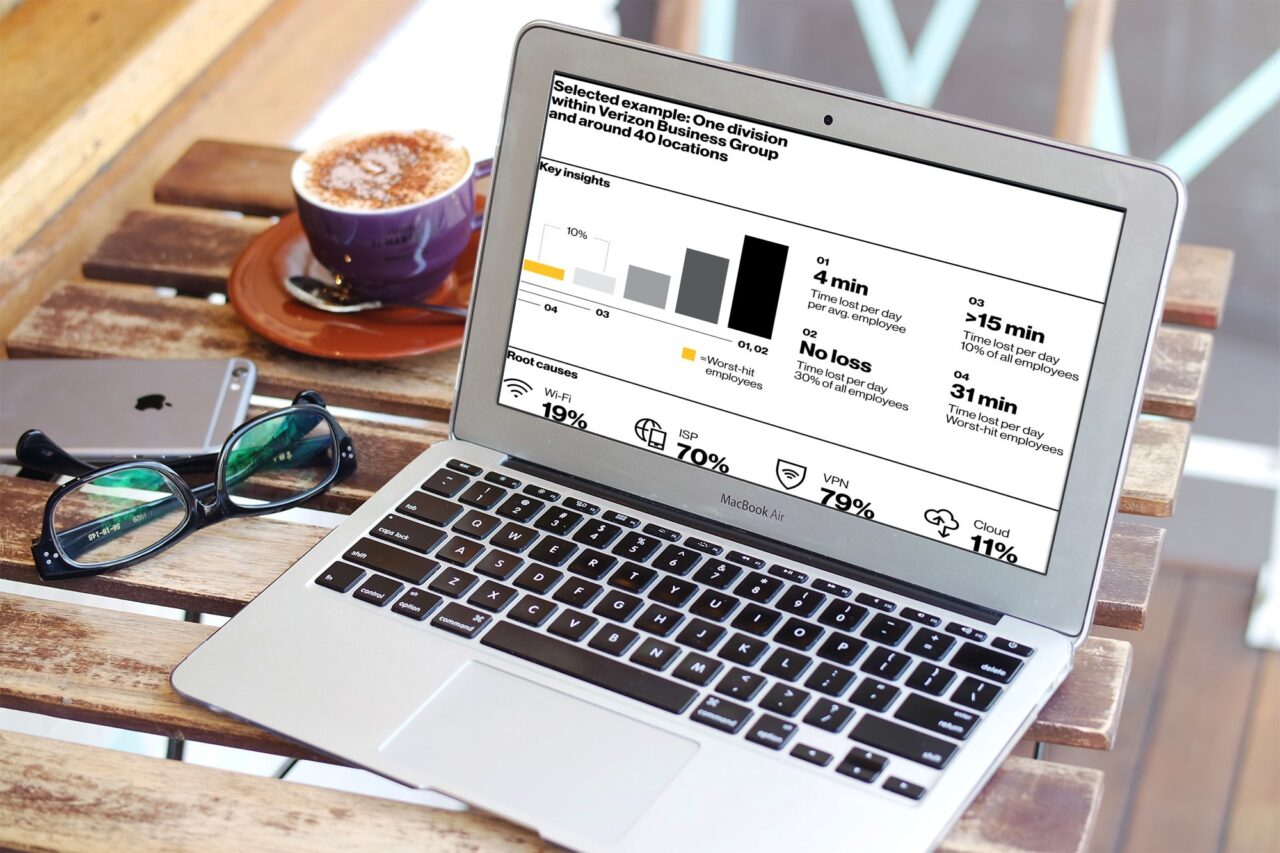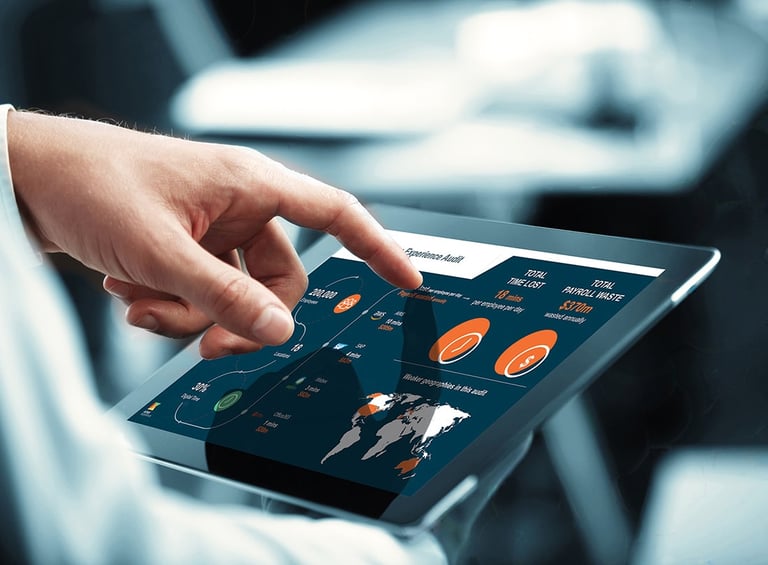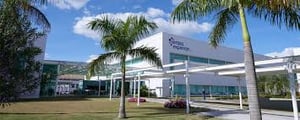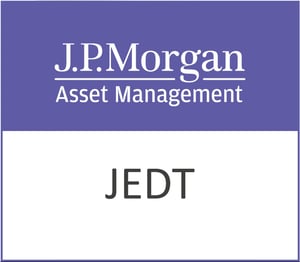Actual Experience plc (LON:ACT) Chief Executive Officer Dave Page caught up with DirectorsTalk for an exclusive interview to discuss their new partner, commercial progress and the sales cycle, the pricing model and the how the sales funnel is progressing.
Q1: Actual Experience have made a couple of announcements over the last 10 days, it seems like your most recent announcement, dated the 7th of December was a new partner. Dave, can you tell us anything about them?
A1: Well, we’re a little bit limited about what we can say at the moment.
In the announcement, we talked about an American very large global computer system manufacturer, they’re going to be familiar to you, they’re going to be familiar to everybody, they’re a household name. They make computing equipment for consumers, for businesses, for telecom operators, and they operate in most countries on the planet.
So, what we are hoping is that we can reveal the name when the offerings that we’re working on together, come to market.
Q2: Is there a different focus with this new partner?
A2: No, not really, not really at all. People might be aware that over the summer period, starting in August, we signed an amendment to our contract with Verizon, which allow Verizon to resell some what we call new human experience management offerings at that point. In October, we announced similar agreements with Accenture and a new agreement with a new partner, Oracle at that time. All of these are the same types of offerings and this new partner of ours is, indeed, it’s exactly the same type of offering again.
In fact, it may be worth mentioning what this new offering is because it’s very relevant and timely right now and what we’re targeting is business leaders of mostly very large global organizations who, like most leaders and most businesses, have experienced a fairly dramatic change in the working practices for their staff and their digital business in January, which has really been brought about by the COVID experiment itself.
Now, a lot of these changes are going to be enduring, but one of the major challenges that these businesses have, or the business leaders have is they don’t really understand what impact that’s had on the business and it was a very dramatic change. There’s a lot more time spent working digitally, people are working at home as we all know, but what effect has that had on the business, the top level business metrics, what effect has it had on employees?
So, our business impact assessment, which is common to all of our partners is a way in a period of one month of assessing all the employees and all the applications they use and revealing across about half a dozen top level business metrics, like operational efficiency, revenue, staff wellbeing, inequality, carbon footprint impact, and one or two other things revealing the sort of impact that this big change has had on those businesses. Now that’s what we’re doing with our new partner and that’s what we’re doing with, in fact, all of our partners.
Now there is one partner, in fact, one existing partner that didn’t need an amendment to their contract and they have also been selling these new offerings as well.
So, it really is, this business impact assessment idea is now common across both the existing set of partners and Oracle and this other new partner.
Q3: Your previous announcement, dated the 26th of November, seemed to provide some commentary on the commercial progress with partners since the contracts were signed. Can you just talk us through that, perhaps starting with the sales cycle?
A3: That’s quite important, one of the reasons why we shifted to a professional service-led go-to market was to try and shorten the sales cycles for delivering the value that our analytics can deliver. People may remember that over the last few years, been working with our partners on delivering the value of our analytics into their customers through very, very large deals by being incorporated into very, very large, typically outsourced or out-tasked deals. Now the sales cycles in those deals, they were inherently very long, 18 months/two years is certainly not uncommon.
So, the challenge there was really to try and find a way of delivering the value quicker and delivering more business value to business leaders by unlocking the offering from those big deals, creating a standalone professional services offering that doesn’t require training for the customer to engage. This is something that’s delivered as a project very, very quickly. So that was, if you like the theory going back a year or so ago when we started to work on these new offerings with our existing partners then.
We were very keen to see what sort of impact when these new offerings were being put in front of our partners, customers, which really started at the back end of July, start of August this year. What has happened to the sales cycles and one of the reasons why we wanted to talk about this in this recent announcement was because a really big customer, who are generally more difficult to deal with than the smaller customers just because they’re big and complex, and this one is no different. Even with a big and complex customer, the sales cycle here has been that they became aware for the first time of these offerings at the back end of July, start of August, went through the initial testing, and then requested proposals for full-scale deployment, in this case, all 10,000 employees in the United Kingdom through to the paperwork & receiving the purchase order, which happened in middle of October so fairly recently. So, that was approximately a three-month sales cycle, even for a big and complex customer and in fact, now we’re already in the early stages of the deployment of those 10,000 customers.
Really, what we’re trying to say is yes, we are starting to see some evidence, there’s one or two smaller deals as well, but this was a more significant deal in the sense it was a big, complicated customer. So, we’re trying to get people to feel that yes, in fact, the sales cycles really have collapsed.
There are other reasons as well, the offering is compelling right now at this time, but it was because business leaders generally do need insight and planning data and understanding of what’s happened to their business so there’s an element of urgency there as well.
Q4: Now the announcement also gave us some clues about pricing, can you expand on that? Can you give us any idea of how you price up a contract?
A4: This is quite a difficult area because all the deals through our partners inevitably have a deal-based pricing construct to them with a fair amount of variability per customer, for all sorts of reasons, people familiar with the industry will understand that.
We didn’t want to give a deal price for this deal that we’ve just been talking about, but we did want to give some clues as to how the pricing works and we’re trying to pitch this offering, which has a seat-based pricing model. So, in the deployment we’ve just been talking about where there are 10,000 employees that are going to have the digital business analysed for every single one of them, we have a seat-based pricing model, which is basically a seat as an employee so it’s a nice, simple pricing construct.
We’re really charging what we like to talk about two to three cups of coffee per employee per month, or the equivalent cost of say, Starbucks Americano, two to three of those per employee per month should give people roughly an idea of how much these deals are being implemented for, even giving deal-based pricing constructs.
Q5: Finally, the announcement talks about the sales funnel, how’s that going?
A5: Well, we’re really rather impressed with it so far because going back to the point I made earlier on that, in fact, the sales engagements really only started right at the start of August or backend of July was the very first ones perhaps so we’ve had August, September, October, three months run.
What we can say is the funnel is being built by all of Actual Experience’s partners, which is good. Funnel-build is dominated by Verizon because actually they are trying to scale up at larger scale in terms of how they’re taking our offering to market so it’s no real surprise that a significant amount of the funnel has been developed by Verizon over the past three months. In fact, the reality is a lot of that funnel has been developed over the last four to six weeks so it’s something that seems to be accelerating nicely at the moment.
One way of analysing it is coming back to the seat-based per employee pricing model is to look at the number of employees that exist in the companies that are sat in the funnel right now. That has gone up significantly, as I said, over the last four to six weeks and is a little over four million employees or four million seats of addressable opportunity sat in the pipeline now.
We want to make it very clear, it’s never going to be the case that our partners will penetrate 100% of those customers or 100% of those seats but what we can see emerging is that is a very significant addressable market with over four million seats, addressable already in the final build, which has made up from many tens of customers.
It’s very reassuring for us to see the number of seats that can be addressed by these offerings and hence, people can sense our excitement here about the potential revenue opportunity that’s coming through in the funnel and the shorter sales cycles that we’re seeing, combined I think give us a lot of hope for the future here now.








































